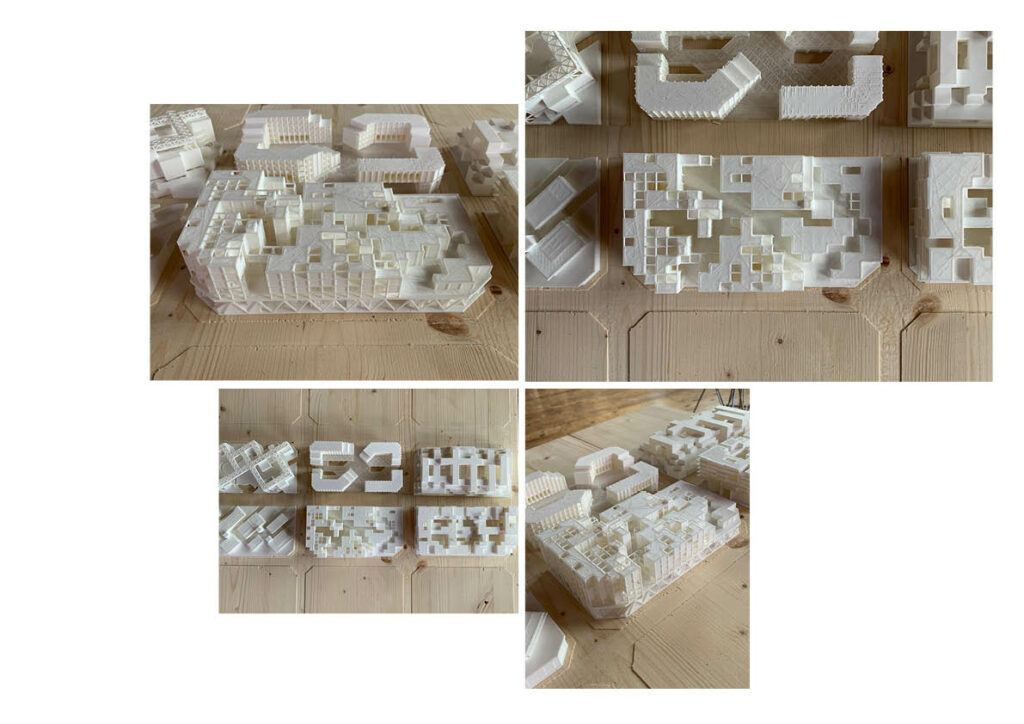The idea of synthesizing a timber furniture manufacturing facility with a residential property to create a dynamic relationship between the building’s dwellers, factory workers and the city of Barcelona as a whole is at the core of this project. To better navigate the challenges of creating a sustainability-driven structure in Barcelona’s Verneda district, we took part in a series of workshops. Each workshop either further solidified our idea of how to properly tackle an architectural design project or greatly expanded our current horizons, exposing us to highly experienced mentors and introducing us to professional tools to help us solve a variety of topical issues.

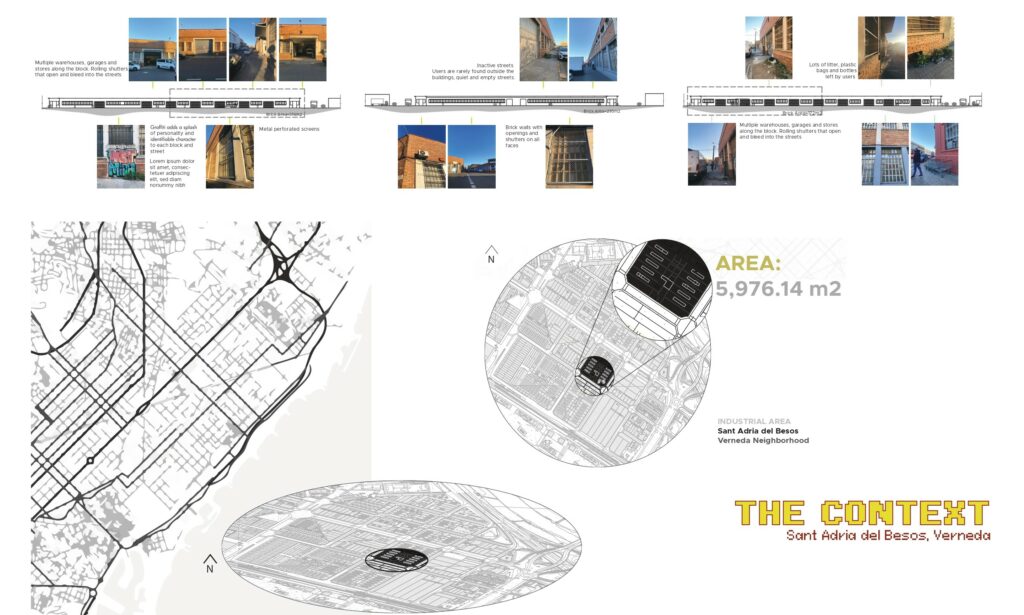
We started by researching climatic properties of the Verneda district at the Thermodynamics Workshop. To test out our initial design assumptions, we created a prototype of a climatic hut, applying the core design principle behind it to the whole building.
Our aim was to create a porous and dynamic building that would take advantage of natural light and ventilation by regulating those parameters through the play of mass and void.
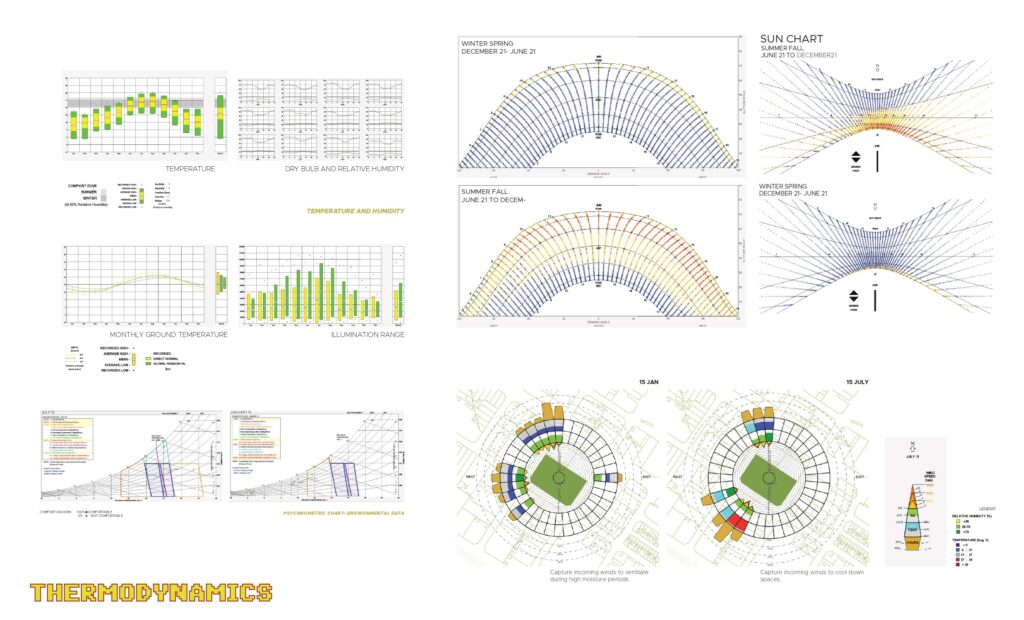
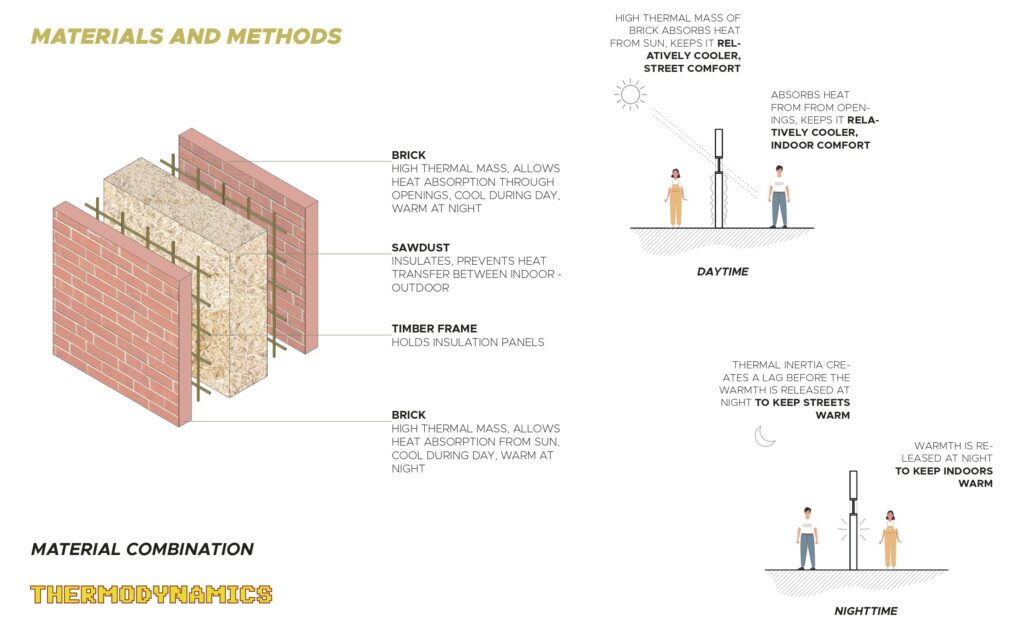
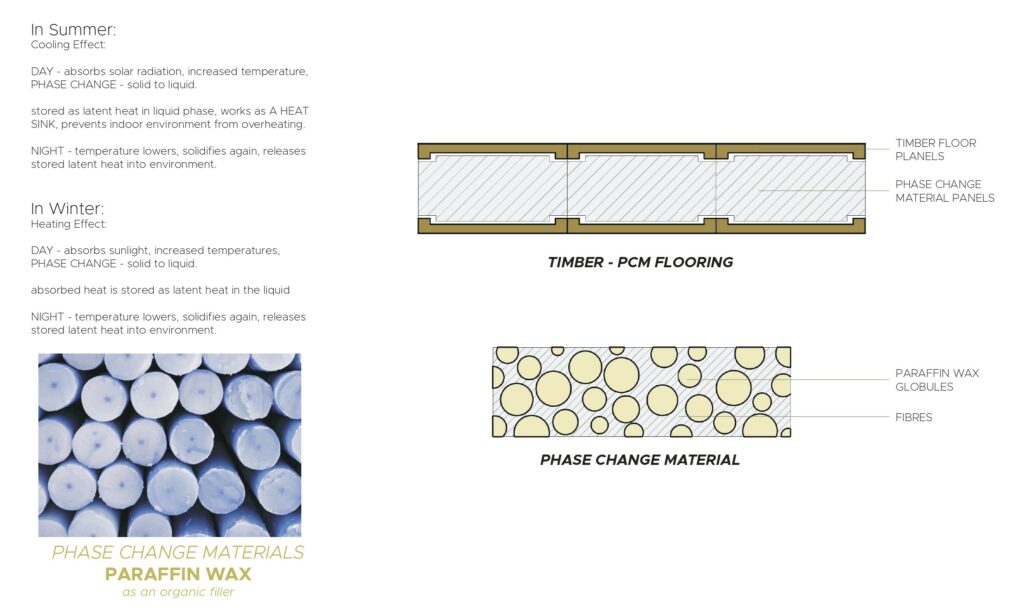

Next, we moved on to the Ecosystemic Structures Workshop to infuse materiality into our design. We decided on going with a prefabricated timber column-to-beam structure — a kind of modular grid between the lines of which the timber panels are slotted in.
The scale of the modules varies depending on the function of the spaces in question. The industry goes with the dimension of 8x8x6m, whereas the residence is 4x4x3 m. For better alignment with the human scale, public spaces are separated further by making use of the wall structure frames that are extruded to form furniture elements.

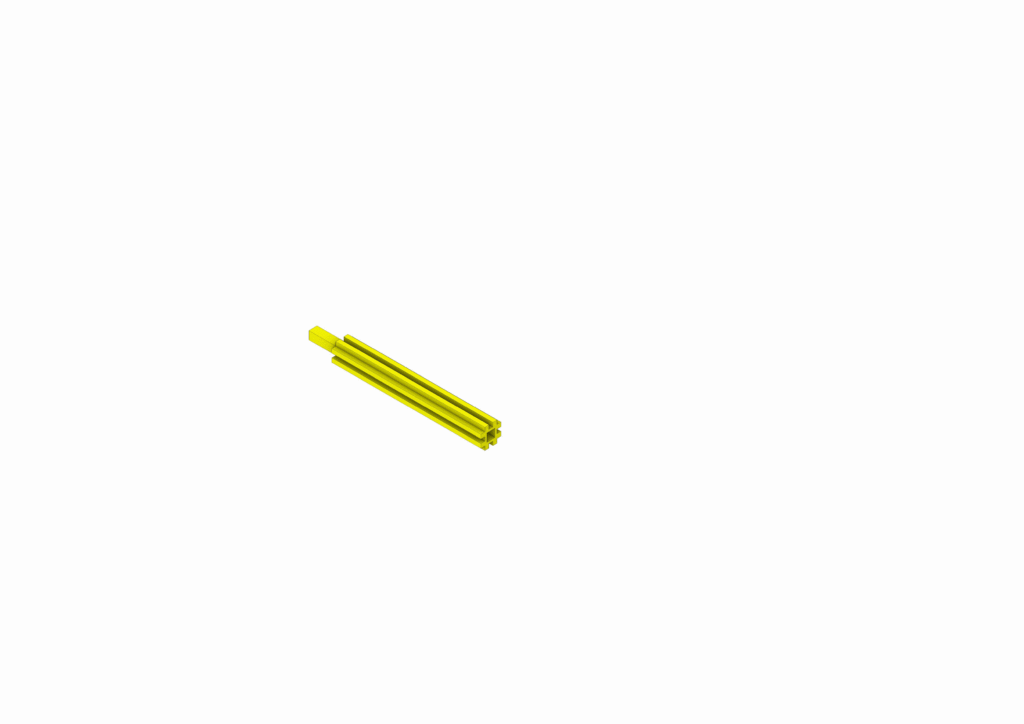


At the end, we needed to solidify and make uniform all of the ideas we had developed during the project workflow. To do so, we developed different types of façades that suit the specific parts of it, while still maintaining the design’s uniformity on the grand scale.
One of the most exciting parts of the effort for us was the development of balconies for the building’s residential units. After some experimenting with the form and after material research we designed a cantilevered balcony with rotating panels filled with transparent pine “glazing” whose placing is determined by the radiation study based on the Ladybug plugin for Grasshopper.

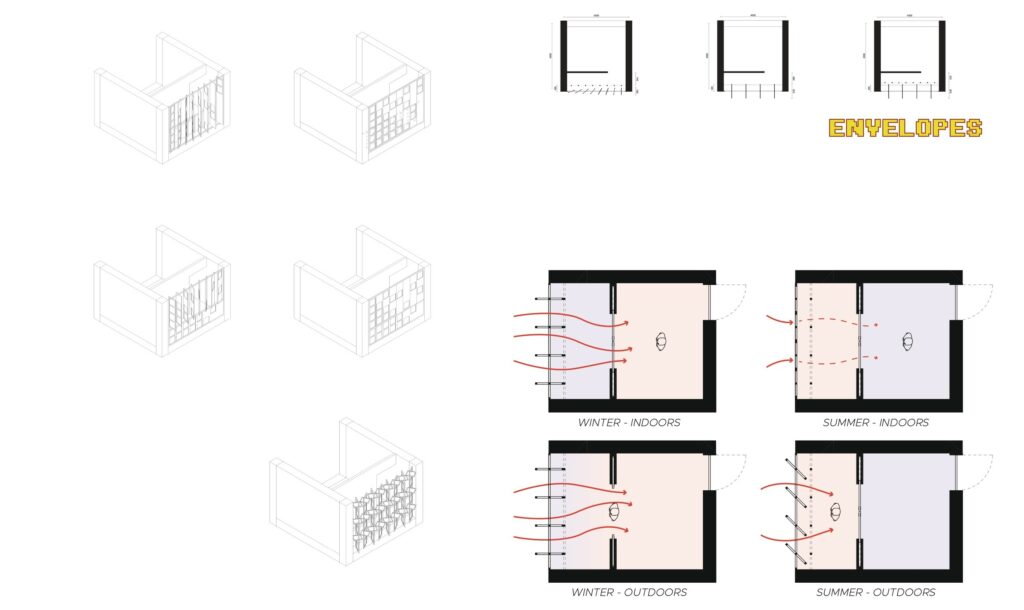
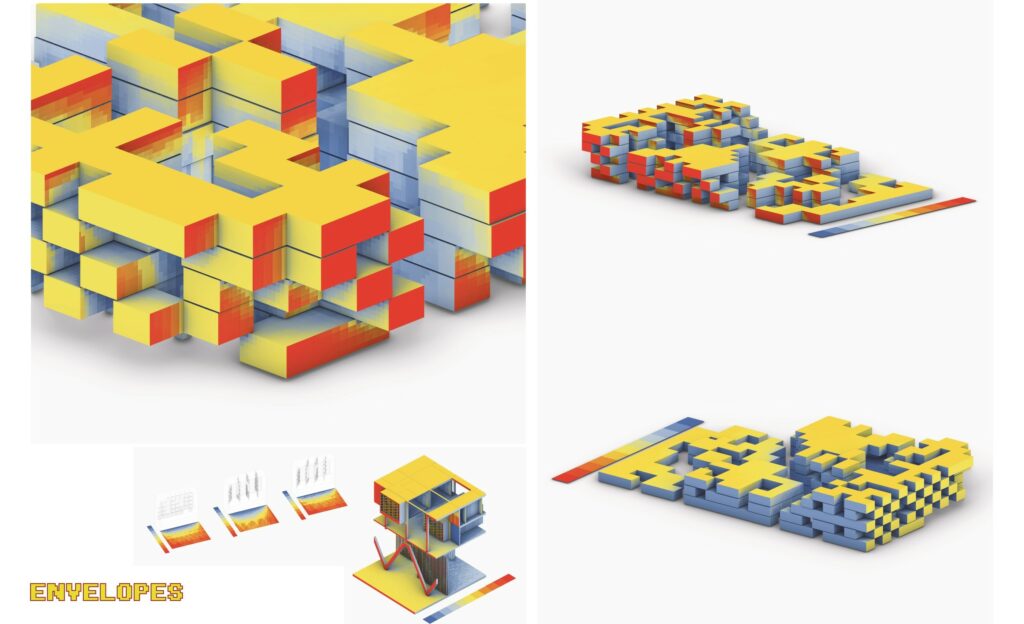
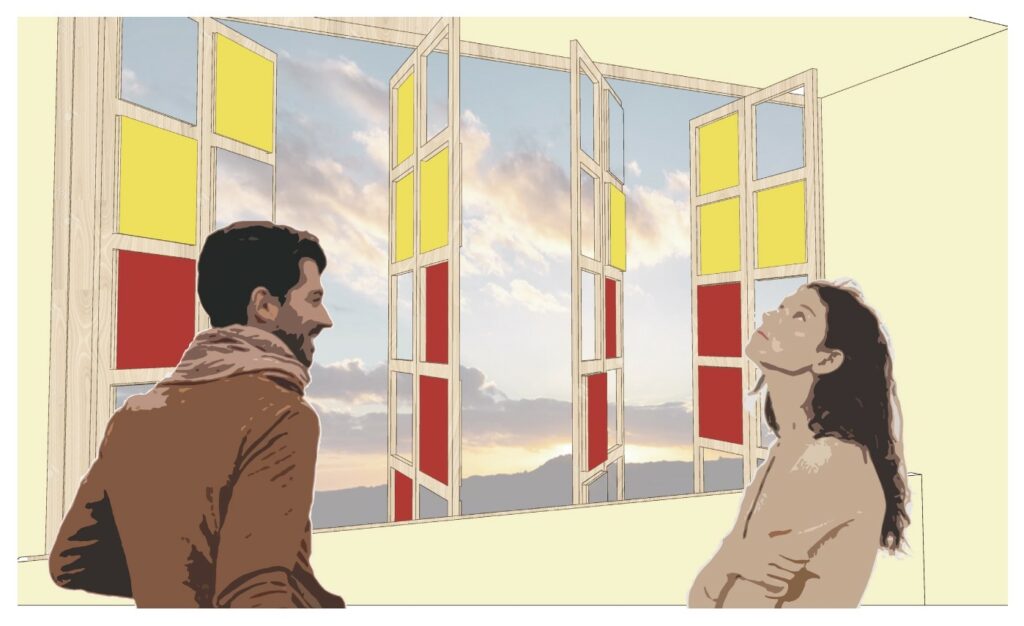
Further to that, to determine the energy consumption of our building we participated in the Metabolic Building Systems: Energy Workshop. By using relevant professional tools, we simulated not only the building’s energy consumption but also its energy production by calculating the perfect locations for solar panels on the rooftops.
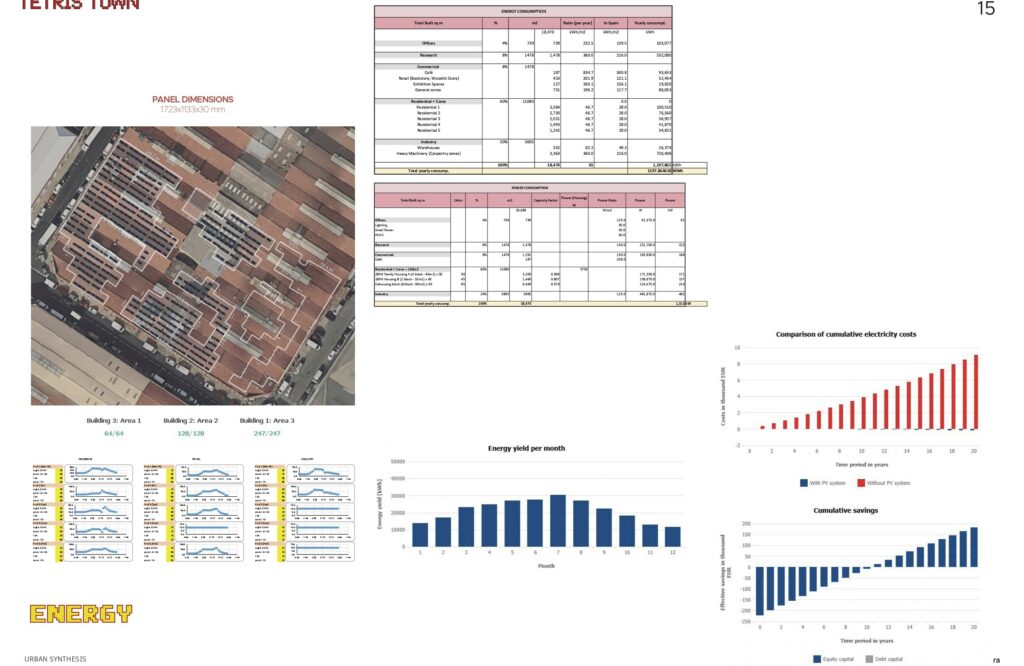
To prevent the unnecessary water wastage, we learned about different water types and ways of repurposing it. One of the more interesting ideas that we applied was the reuse of grey water for irrigating greenery that simultaneously works to help filter the water for further re-use.
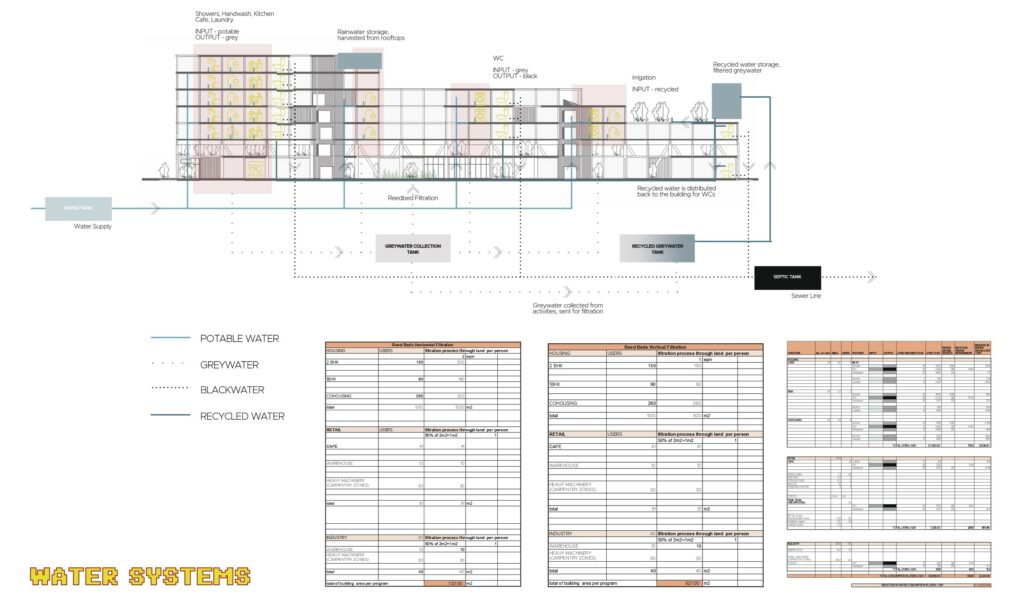



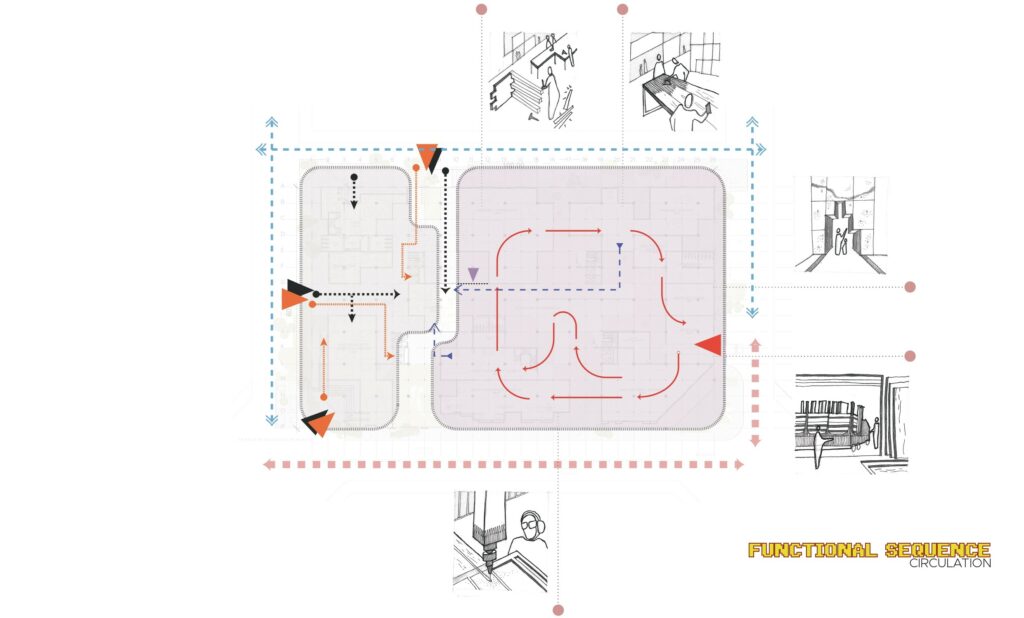
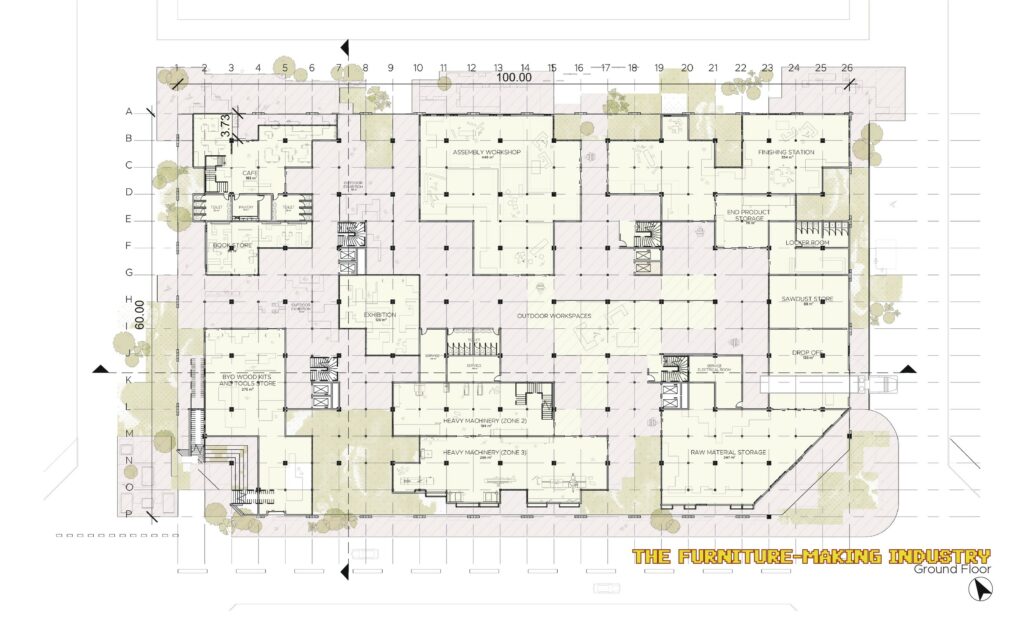


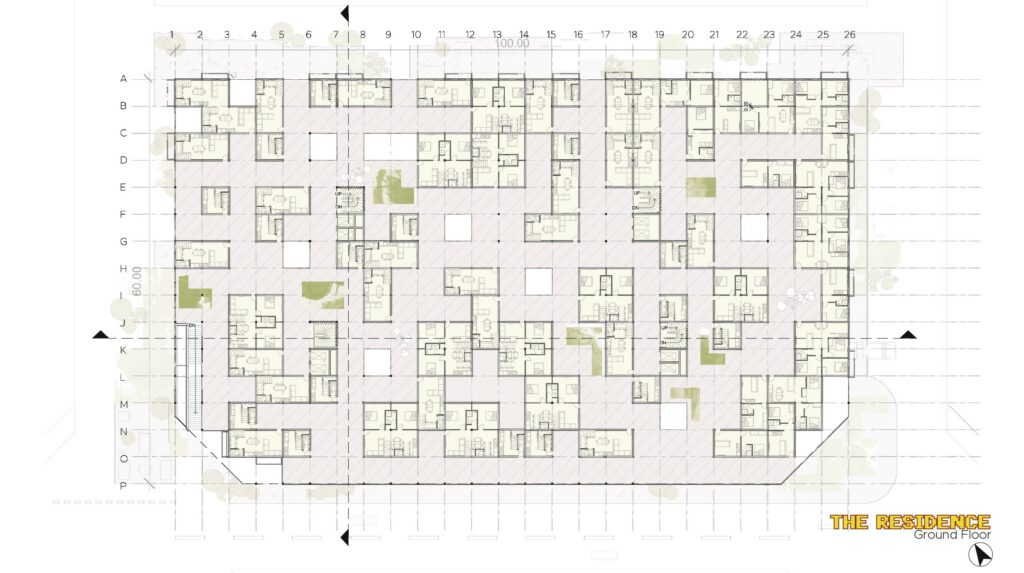
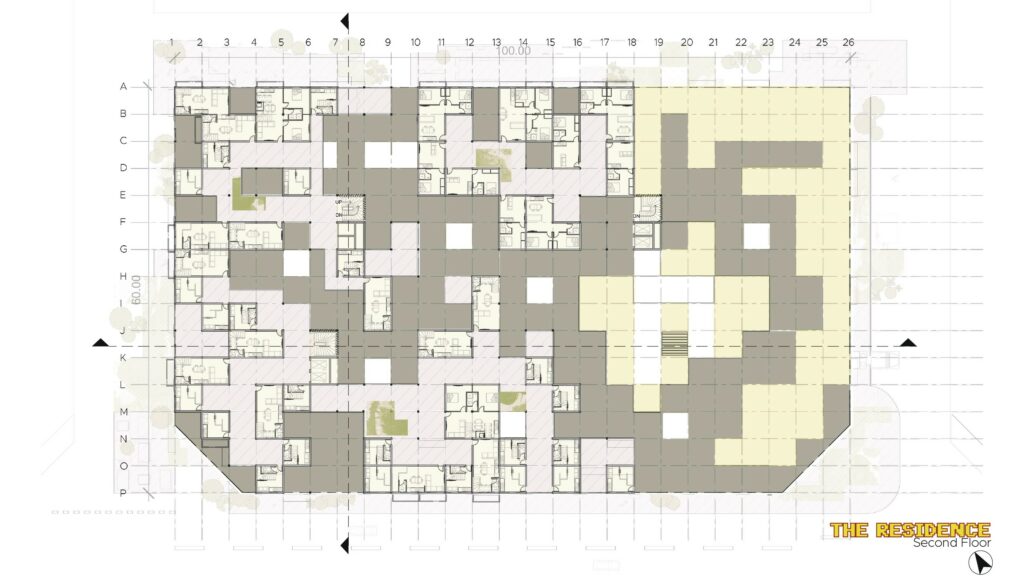



The Urban Synthesis project was a great way to get exposed to the comprehensive ways of designing a complex project that addresses all relevant issues. We are looking forward to applying the knowledge and experience we gained through working with state-of-the-art digital tools and accomplished mentors to our future student and professional projects alike.
